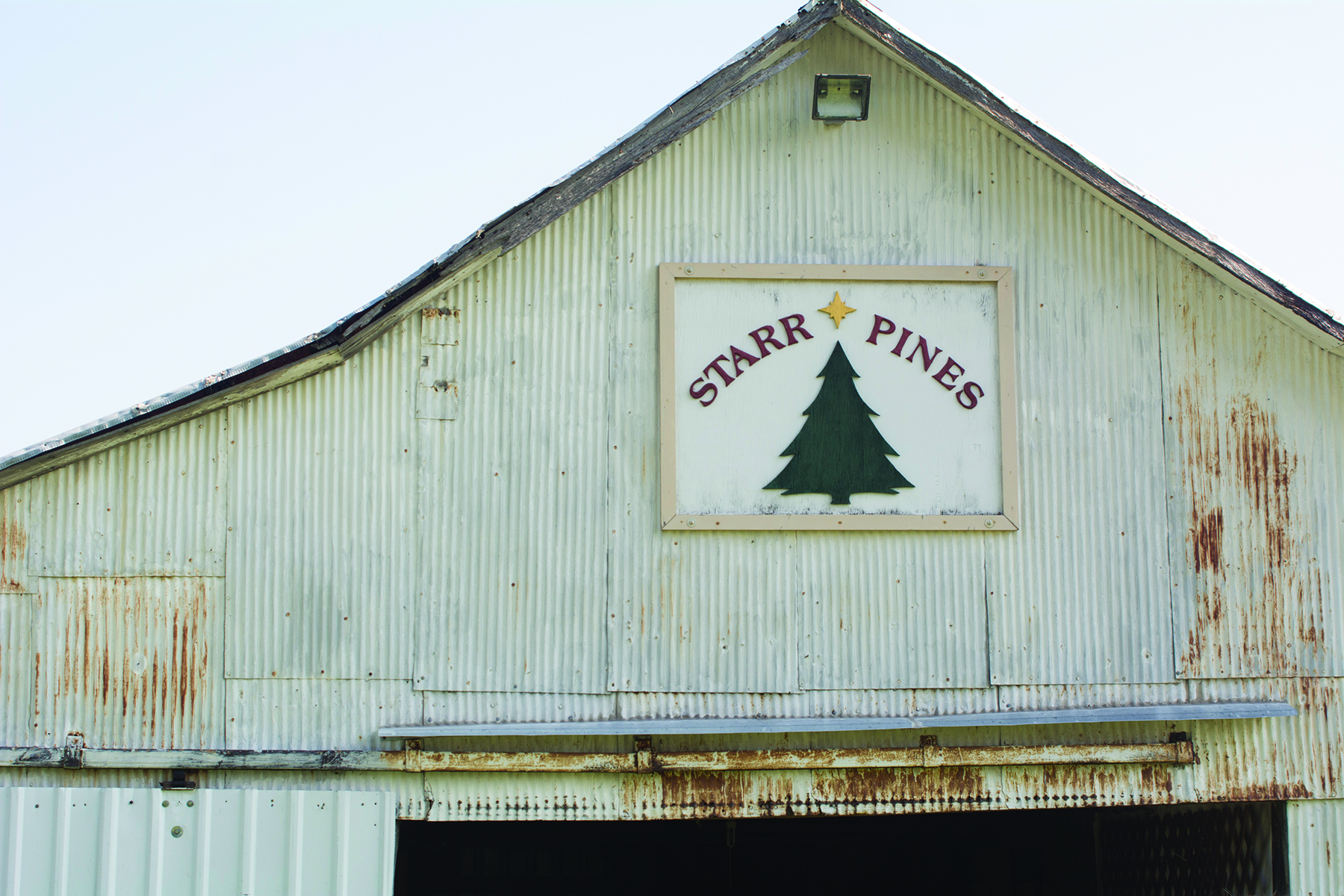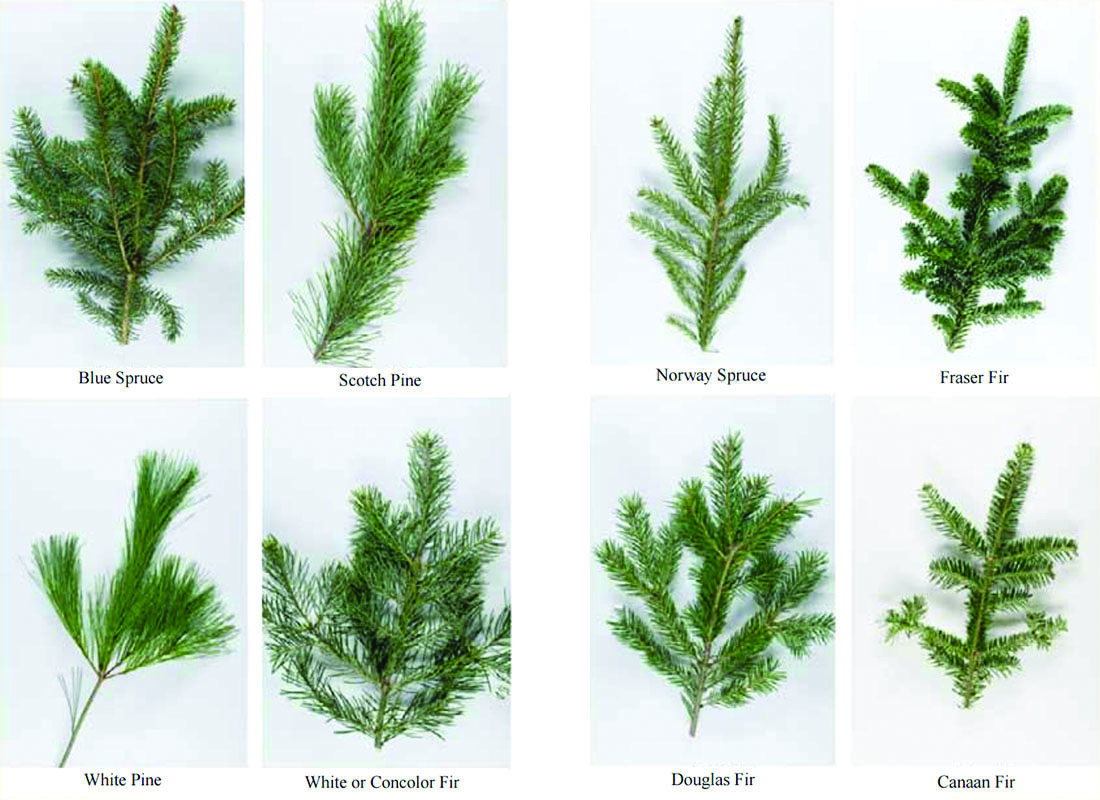Story and Photos by Courtney Guffey
It’s a chilly December day. Christmas is near and the time-worn tradition of cutting the family Christmas tree has finally arrived.
This tradition plays out across the country from Thanksgiving Day all the way up to Christmas Eve. For many families, it is the one time a year they visit a farm. Christmas tree growers like Wayne and Ann Harmon make that experience as enjoyable as possible. Folks love their Christmas traditions, but they also enjoy learning about agriculture.
The couple owns Starr Pines Christmas Tree Farm south of Boonville and has been selling Christmas Trees since 1986. Wayne started farming four years earlier to grow pine trees. “Whether or not it was the weather or me, it didn’t work until my wife came along,” he says. Together, the two have grown the tree farm through many ups and downs.

This year is different for them. It is the first year Starr Pines is selling exclusively retail to customers who want to experience the farm as they pick and cut their favorite tree. Customers are drawn to a mix of nostalgia, tradition and time spent on a real farm. The Harmons cater to those desires in a number of ways to make their visit memorable.
Starr Pines provides a wagon ride to the field for the family to find and cut their tree, and then it is back to the barn to shake and bale their tree. The wagons, pulled by old 2-cylinder John Deere tractors, are an attraction that became a necessity as the farm expanded and the trees were grown further and further from the barn.
“A lot of people will come out just for the hayride. I use the older tractors because when people come to the farm, they aren’t interested in seeing new barns and new tractors. They are interested in seeing what their grandpa drove while they take a wagon ride through thousands of pine trees,” he says.
Over the years, the Harmons learned by listening to their customers. Donkeys and chickens are on the farm. Fresh eggs are sold throughout the year. During the busy holiday season, Starr Pines is open daily from Thanksgiving through Christmas Eve. In their gift shop there are ornaments, tree stands and fresh pine wreaths for purchase. Hot cider and Amish candies are always popular. Skin care and aromatherapy products in the store are made by Ann from herbs grown on the farm. Honey products from their apiary were popular, but the Harmon’s bees suffered from colony collapse. Wayne and Ann are working to rebuild hives.
“People who come out here from the city want to understand how we do it; to understand how you stay a farm and what is involved,” he says. “People are truly out here for a real experience so we try to offer that Christmas-on-the-farm feeling. For many, that is just as important as taking home the tree.”
And, people can be particular about their trees. Wayne says the variety of trees he grows today has changed because the public has changed. Years ago, people wanted Scotch pine, a tree easy to grow in Missouri but prone to insects like the pine nematode. The best seller is still Scotch pine, which sells at a lower price point, however, more consumers are becoming interested in firs. Canaan and Fraser firs are the newest varieties grown on Starr Pines. “We are having success with them and are transitioning away from Norway Spruce to these fir varieties,” says Wayne. “Every year I try a new variety to experiment and see what works and what the public wants.”
A growing segment of customers want organic trees and the Harmons are working to meet the demand. They will sell a handful of chemical-free trees this season. Wayne says there are organic tree farms in the United States, but they are uncommon. “It is unique to Christmas tree farms and my goal is to eliminate spraying entirely in the hope that firs do well. Firs do not have the pest problems Scotch pines have. We think this will work with the firs. We first started planting them in 2012, but since that was a drought year, they may take another year before they are ready.”
It takes years for Christmas trees to grow to cutting height, and weather conditions can prolong the time to harvest. One weather event shaped the business the Harmons have today.
Before 2001, wholesale was the bread and butter for Starr Pines. Contracts for companies such as Wal-Mart and Sutherland’s Lumber were signed in January and February for the following Christmas season. More than 5,000 trees were harvested annually.
Then, on April 10, 2001, the clouds grew dark as a cold front dropped temperatures from 82 to 32 degrees. With the drastic change came tornadoes and hailstorms. One tornado formed above Starr Pines, but never touched ground. Instead, winds whipped hailstones in every direction, stripping trees of pine needles and flattening the grass. When Wayne ventured out of his house, he found hail up to his knees. “It was scary,” he says. “Loss of inventory in the field was over half a million dollars. As a farmer, though, you learn to be an optimist or get out of the business.”
Wayne cut and burned more than 60,000 damaged trees that year. His wholesale customers were told they would not have trees for seven years. During the holiday season, he sold the few trees that survived, cut some trees on a neighbor’s property and purchased pre-cut trees for his retail customers.
As painful as the hailstorm was, it marked a new beginning for Starr Pines. “You don’t always get a do-over in life, but we had one. We reassessed what we were going to do starting over a second time.”
The slow transition began from selling wholesale to completely retail. The Harmons decided to help those involved in fundraisers and their wholesale customer base changed to service organizations like Boy Scouts, community organizations and church groups. Because they had fewer trees, as the more profitable retail sales grew, the Harmons curtailed wholesale efforts.
Like any farmer, weather and pests affect their tree operation, but instead of having a 90-day growing season their crop takes years. Survivability of the trees, especially up to 2-to-3 years, is still a challenge. “When you start to think what the risks are in farming, you may think you have a handle on it, then, all of a sudden something happens you never thought of,” he says.
But since graduating from the University of Missouri’s School of Forestry, Wayne’s working life has always been about trees and nature. He is a huge promoter of trees and their place in the environment. In July, Starr Pines was one of several stops during a Missouri Agritourism Conference farm tour. The conference was sponsored by Missouri Farm Bureau and the Missouri Department of Agriculture. He shares his love of trees every time a family peppers him with farm questions on the wagon ride to find that perfect Christmas tree. In turn, more people learn about the importance of agriculture. What Wayne repeatly calls the “farm experience” is in itself a worthy Christmas gift.
What is your favorite tree?
Scotch Pine
Scotch pine is the most commonly used species for Christmas trees in the central and eastern U.S. Because of its high planting survival, it is a preferred species for many choose-and-cut growers. Approximately 1 inch long, Scotch Pine needles don’t fall when they’re dry, providing excellent needle retention. The color is a bright green. When displayed in a water filled container it will remain fresh for the normal 3-to-4 week Christmas season. It seems to thrive in the hills of Missouri. It likes clay soils, tolerates hot and cold temperatures and handles dry summers. The tree can grow up to 8 feet in 7-to-8 years. This pine does suffer from insect and disease problems. Scotch or Scots pine is native to Europe and Asia.
Norway Spruce
For Christmas trees, overall color of Norway spruce is fair to excellent, but needle retention is poor unless the trees are cut fresh and kept properly watered. Growth the first 10 years is relatively slow and at least 8 years is needed to grow a 6-to-7 foot tree. It has dark green needles and drooping branchlets that have needles between one-half and 1 inch long. Sometimes confused with true firs, spruces in general have rectangular rather than flat needles, and cones which hang down rather than stand erect on the stem. They are native to Europe, but in some areas of the Northeast are established as naturalized plants.
Fraser Fir
Fraser fir branches turn slightly upward. They have good form and needle retention and are dark blue-green in color with a pleasant scent. Fraser fir is a uniformly pyramid-shaped tree. Needles are flattened, dark-green with a medial groove on the upper side and two broad silvery-white bands on the lower surface. The species originates from the Southeast and is sometimes called Southern balsam or Southern balsam fir.
Douglas Fir
Douglas fir is not related to the true firs. The needles are dark green or blue green, 1-to-1 1/2 inches long, soft to the touch and radiate out in all directions from the branch. They have a sweet fragrance when crushed. The branches are spreading to drooping, the buds sharply pointed. The Douglas fir has been the major Christmas tree species used in the Pacific Northwest since the 1920s. An interior strain from the Rocky Mountains (P. menziesii var. glauca) that withstands more harsh growing conditions has been extensively planted throughout the Midwest tree farms. Nationally, it remains a popular Christmas trees species.
Canaan
Canaan (pronounced “Ka-naan”, with emphasis on the last syllable) is a relative newcomer to the Christmas tree market. Canaan fir has many similarities to both Fraser and Balsam fir in growth and appearance. This similarity has led to confusion. Today, Canaan fir is considered a variety of balsam fir, whereas Fraser fir is considered a separate species. Canaan fir, also called West Virginia balsam fir, is native to isolated pockets in the mountains of West Virginia and Virginia. Growing Canaan fir eliminates many of the disease and pest problems associated with Scotch pine.
Information from the National Christmas Tree Association (realchristmastrees.org).
This article originally appeared in Show Me Missouri Farm Bureau Magazine, a membership publication that covers all of the issues for members and includes interesting features, opinions and the latest information on benefits and services. Become a Missouri Farm Bureau member to subscribe!



